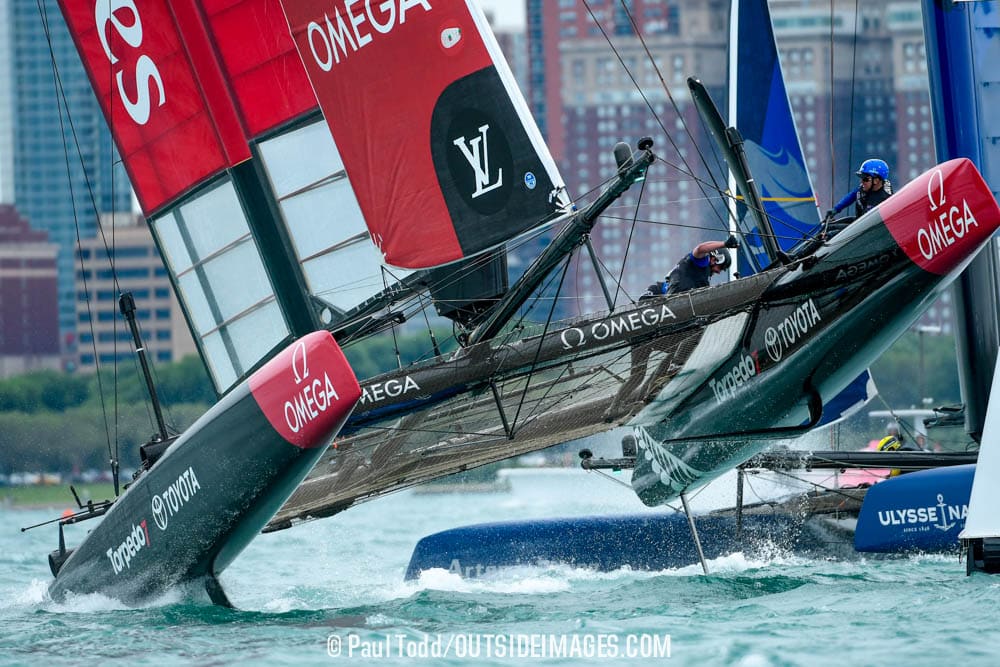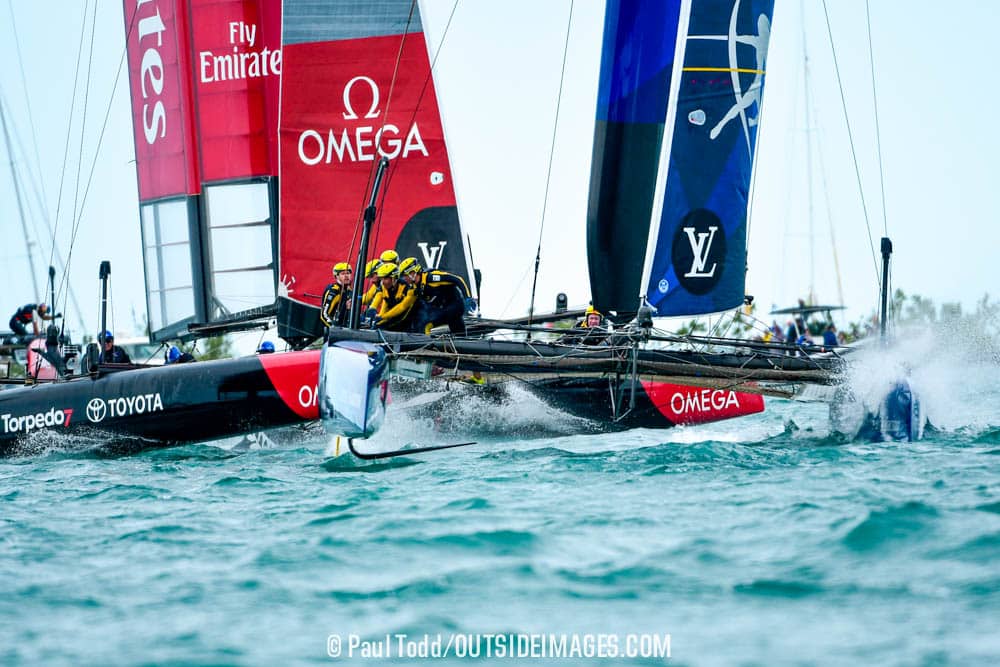
With SoftBank Team Japan comfortably out front in the fourth and final race of the Louis Vuitton America’s Cup World Series Chicago, the final leg for Artemis Racing was an otherwise simple sequence of events: “Put the elbows out,” says skipper Nathan Outteridge, get across Emirates Team New Zealand, hit the starboard layline and follow Softbank into the finish. If all went to plan, Artemis would secure its first win of the 2016 series. They were aware of the points to play and they knew what they had to do to not let them slip away.
For the entire race leading to this final-leg climax, they’d sailed masterfully, moving up through the fleet by capitalizing on opportunities as others made critical mistakes. But positions shuffled quickly on the short courses off Chicago’s Navy Pier, coming from the left at the top of the beat they crossed Land Rover Ben Ainslie Racing and then ducked Emirates Team Zealand. It was a safe tactical play to finish in control on starboard tack and on top of their rivals. But when they completed their final tack they were vulnerable to a New Zealand luff. The Navy Pier was a straight shot but not a sure thing.
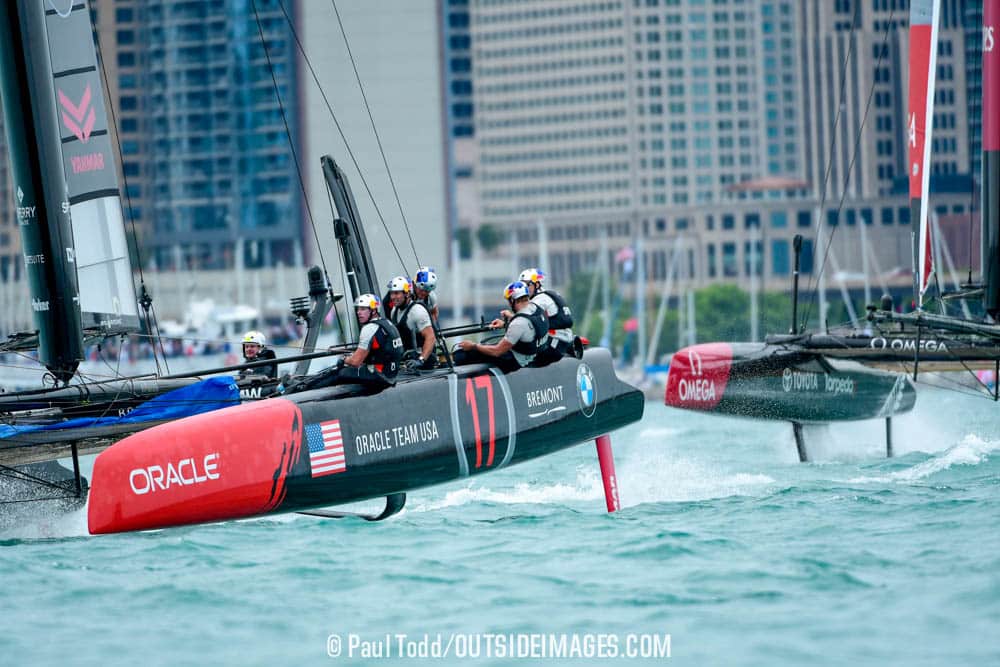
Oracle Team USA
In the ensuing bow-to-bow sprint to the finish Outteridge left just enough distance between he and Emirates Team New Zealand, and as expected, just as Artemis was starting to get over the top of the New Zealanders, Burling luffed them hard. With quick reflexes honed over many hours of AC racing, Outteridge responded with an immediate push of the tiller. No penalty. Burling luffed again and Outteridge responded. Already down speed, Artemis came to a near stop with its bows mere feet below the finish line. Their second-place position evaporated (that went to BAR), and then the New Zealanders stole third as Artemis sat stalled with Oracle Team USA tearing in from behind.
Onboard Artemis Racing Team’s VIP boat there was a collective gasp and cries of despair as what seemed a done-deal overall victory was evaporating before their eyes. If there were a penalty applied, Artemis would have had to sail back across the finish line and refinish. First could have easily been third or worse. Umpires in a remote both onshore, however, signaled no penalty and as Artemis coasted across the finish with a fourth there was joyous relief across the entire Artemis camp.
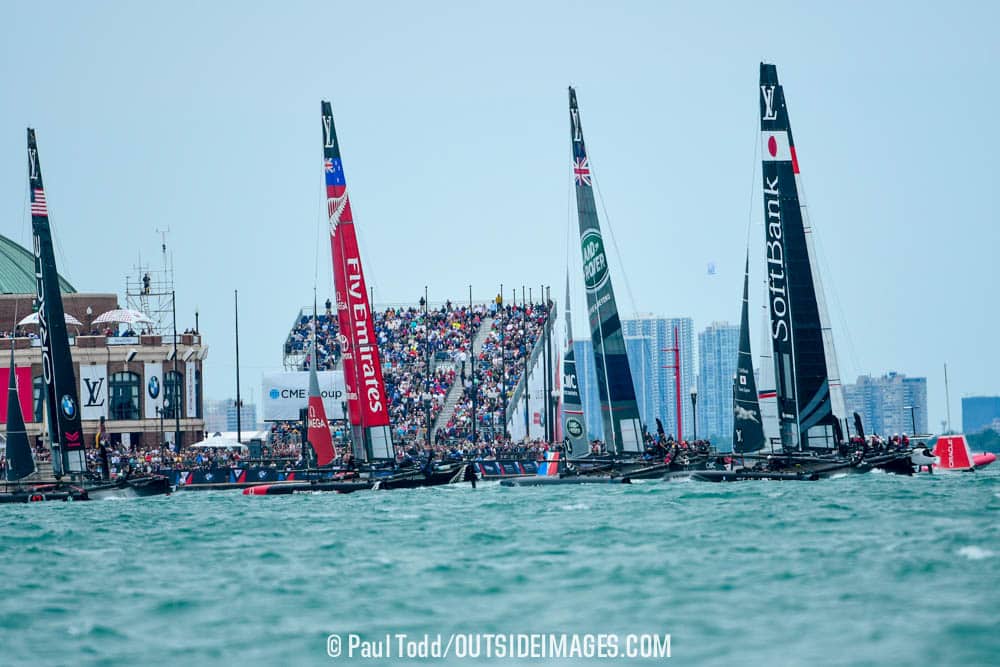
Front row seats
“Team New Zealand came through and they were just getting through us [to leeward],” said Outteridge, “but we knew fourth was going to be just enough and there was no point in risking it.”
The mistake, says Artemis coach Tom Burnham, was not tacking sooner and leading Land Rover BAR into the finish, but that would be one for the post-celebration debrief.
“We weren’t really sure we’d won,” said Artemis’ Christian Kamp as team members hosted a post-race toast with team supporters and VIPs with luxury watchmaker Ulysses Nardin, “but when the TV boat came up alongside it was a good sign we had it.”
Artemis’ Loick Peyron, who was onboard the VIP boat as race commentator, acknowledged that they would review that nail-biting final, but for now it was time to celebrate a consistent performance maintained throughout the three-day, four-race series.
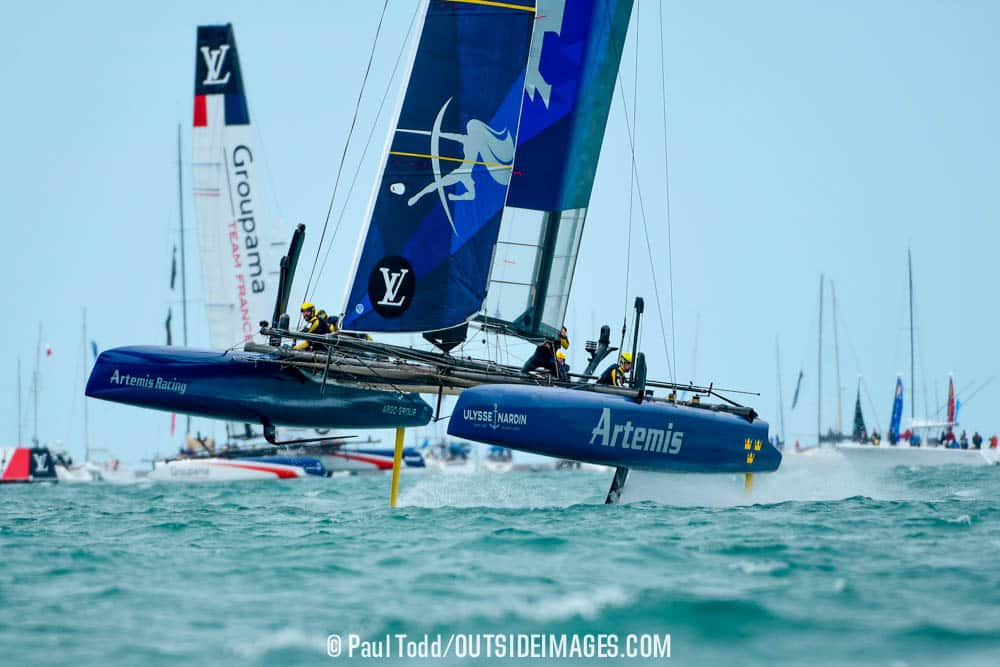
Heads up sailing
The regatta’s final day, aka Super Sunday, is when race points count for double. Burnham said the strategy was to set up for opportunities to break away whenever possible, sail their own race, and let others make mistakes. That’s Sailboat Racing 101 and Burnham’s calming presence in the coaching squad is clearly making a difference. “He’s made a tremendous difference,” says Peyron. “It is very easy to see.”
Rewinding the day’s races, Artemis’ trump cards were its starts. From all three they were able to immediately execute their strategy. For the second and third races they set up for the leeward end of the line, which is typically the highest risk place to be because boats that start further up the line typically have a better exit angle and speed to Mark 1.
From pre-race warm-ups, however, they calculated that the sailing angle to Mark 1 was lower than normal, which would allow them a safe layline to Mark 1. More importantly, perhaps, they also knew there was only about 25 seconds to the first boundary, placing an even greater emphasis on the ability to jibe as soon as possible with an open runway to Mark 2.
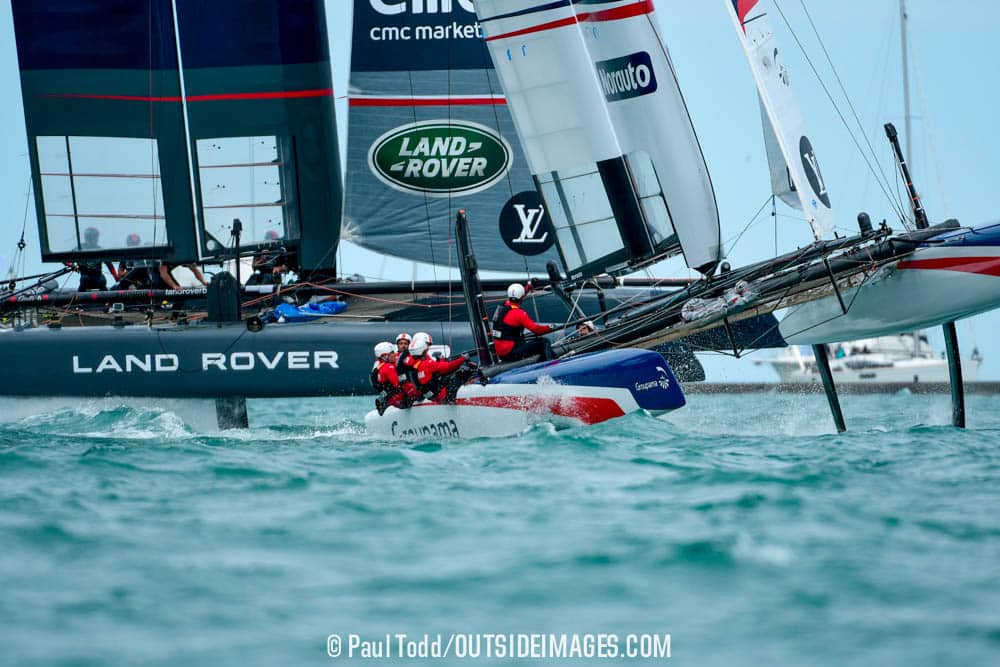
Groupama
In Race 1 they started mid-line clean and gave chase to runaway race winner Land Rover BAR. In the second, they controlled the leeward end and launched straight into a wire-to-win. In the third, they were at the leeward end again, a fraction late in pulling the trigger, but their position eventually allowed them to jibe before the boundary while others, including Oracle Team USA picked up costly boundary penalties. If it weren’t for Groupama bringing up the rear and surprising them on starboard, forcing Artemis to do a quick clearing jibe back to starboard, there’s no doubt they would have been sprung again and challenging eventual race winner Land Rover BAR.
Still, they sailed the day without a single penalty and in the 15-knot conditions it was less about boathandling mistakes as it was fleet management. This World Series Chicago win, says Kamp, was all about sailing clean and consistent.
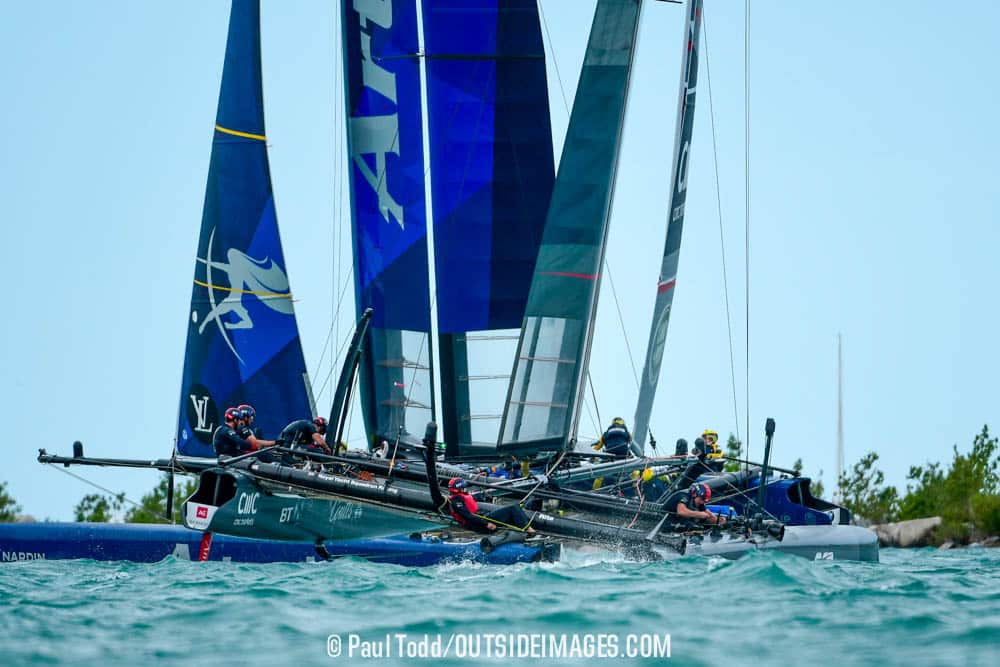
Land Rover BAR
Another important change says Burnham was shifting tactician Iain Percy out of the wing trimming position and forward in the boat. With Luke Parkinson assisting on the wing sheet Percy could better manage his tactics. The arrangement clearly worked and Kamp acknowledged that they felt confident all day. Trimmer Kalle Torlén attributed their success to the extra righting moment from his breakfast: a generous portion of pancakes and yogurt. He was fueled and ready to win, and so too were his teammates.
